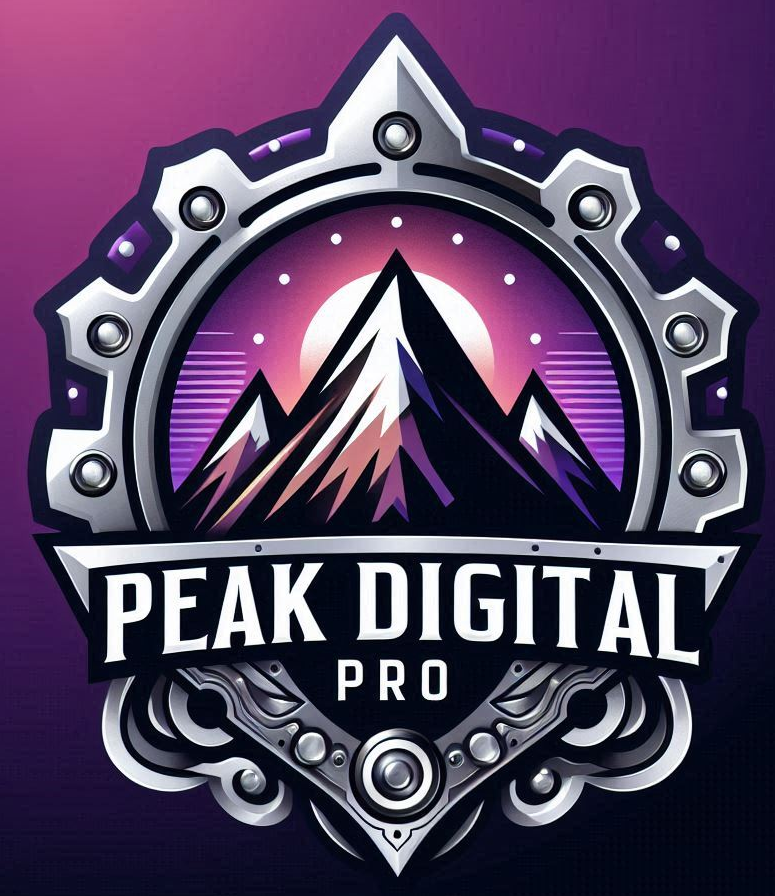Audit Your Social Media: Enhance Your Business Presence
Auditing your social media can feel overwhelming but it is the key to unlocking major improvements for your brand. Most teams are shocked to learn that businesses often have more online profiles than they realize and missed accounts can quietly damage reputation or security. Yet the real surprise is that a thoughtful audit can transform scattered efforts into a laser-focused strategy that grows engagement, deepens customer trust, and lets you finally measure what matters.
Table of Contents
Quick Summary
| Key Point | Explanation |
|---|---|
| 1. Define Clear Audit Objectives | Establish specific, measurable goals to guide your social media audit for effective marketing improvements. |
| 2. Inventory All Social Media Accounts | Create a detailed list of all your brand’s social media accounts to ensure none are overlooked or unmanaged. |
| 3. Analyze Engagement Beyond Likes | Focus on meaningful metrics such as reach, shares, and comments to understand how content resonates with your audience. |
| 4. Evaluate Content Quality Rigorously | Assess your content for brand consistency and valuable messaging to maintain a professional brand identity. |
| 5. Develop an Action Plan for Enhancements | Prioritize and outline specific initiatives for social media improvement, setting clear timelines and responsibilities. |
Step 1: Define Your Audit Goals and Objectives
Successful social media auditing begins with crystal clear objectives. Your goals will transform a generic review into a strategic roadmap for digital marketing improvement. Before diving into analytics and metrics, you need to understand precisely what you want to achieve through this comprehensive social media assessment.
Start by examining your current business challenges and digital marketing performance. Are you struggling with low engagement rates? Do you want to understand which platforms generate the most meaningful connections with your target audience? Or perhaps you aim to optimize your content strategy and resource allocation across different social channels. These fundamental questions will help you craft specific and actionable audit objectives .
According to University of Florida , establishing SMART goals is crucial. This means your objectives should be Specific, Measurable, Achievable, Relevant, and Time-bound. For instance, instead of a vague goal like “improve social media performance,” a SMART goal would be “Increase Instagram engagement rate by 25% within the next quarter by creating more video content and targeting local business professionals.”
Consider developing objectives across multiple dimensions. Some potential focus areas include audience growth, content performance, brand sentiment, competitive benchmarking, and conversion tracking. Your audit might reveal insights about which content types resonate most, what posting times generate maximum interaction, or which platforms offer the best return on investment for your specific business model.
As you define your goals, remain flexible and open to unexpected discoveries. A thorough social media audit often uncovers surprising opportunities and challenges that weren’t initially apparent. Document your objectives clearly, ensuring they align with your broader business strategy and can be tracked using available analytics tools. This preparatory work sets the foundation for a meaningful, actionable social media audit that can drive real business growth.
Here is a step overview table summarizing each key phase of the social media audit process, including its main focus and the expected outcome.
| Step | Main Focus | Expected Outcome |
|---|---|---|
| Define Audit Goals and Objectives | Set specific, measurable goals aligned with business strategy | Clear objectives guide all audit activities |
| Compile Social Media Accounts List | Inventory accounts across all platforms | Comprehensive list of owned, active, and rogue accounts |
| Analyze Engagement Metrics | Examine reach, shares, comments, engagement rate | Identification of top-performing content and weak spots |
| Evaluate Content Quality & Consistency | Assess content alignment with brand voice, visuals, messaging | Actionable insights for improving professionalism and impact |
| Identify Audience Demographics & Reach | Review demographic data from analytics tools | Detailed audience personas and targeting refinement |
| Develop an Action Plan for Improvement | Convert findings into a prioritized roadmap | Targeted, measurable improvements ready for implementation |
Step 2: Compile a List of Your Social Media Accounts
Compiling a comprehensive inventory of your social media accounts is the foundation of an effective audit. Most businesses have more online profiles than they realize , scattered across multiple platforms and potentially managed by different team members. Your goal in this step is to create a centralized, detailed record of every social media presence associated with your brand.
Begin by conducting a thorough digital investigation. Start with the obvious platforms like Facebook, Instagram, LinkedIn, and Twitter, but don’t stop there. Search for your business name across less common platforms such as TikTok, Pinterest, YouTube, and industry-specific networks. Check variations of your company name, including abbreviations, alternate spellings, and potential misspellings. This systematic approach ensures you don’t overlook any existing accounts that could impact your brand reputation .
According to Gardner-Webb University , it’s crucial to document each account’s details meticulously. Create a spreadsheet that captures critical information for each profile, including the platform name, account username, creation date, current administrative access, and the team member responsible for managing the account. Pay special attention to identifying any dormant or forgotten accounts that might still be visible to potential customers.
Remember that rogue or abandoned accounts can be more than just inactive digital spaces. They represent potential security risks and can send mixed messaging about your brand. Some accounts might have been created during past marketing campaigns or by former employees, making them particularly important to track down and either repurpose or deactivate.

To verify your audit is comprehensive, cross-reference your findings from multiple sources. Use search engines, social media platform search functions, and even ask team members about any accounts they might know about. The verification process is complete when you can confidently state you have a full, transparent overview of every social media profile connected to your business, ensuring no digital presence goes unexamined.
The checklist below helps ensure your social media account inventory is thorough and accurate during your audit process.
| Task | Purpose | Completion Status |
|---|---|---|
| Search for business name and variations across all platforms | Find all official and unofficial brand profiles | [ ] |
| Document platform, username, admin access, and manager | Create a detailed record of each account | [ ] |
| Identify dormant or rogue accounts | Prevent security risks and brand inconsistency | [ ] |
| Verify findings with team members and multiple sources | Confirm a complete, accurate account list | [ ] |
| Note outdated or off-brand profiles for action | Plan deactivation or rebranding as needed | [ ] |
Step 3: Analyze Engagement Metrics and Performance
Engagement metrics reveal the true pulse of your social media strategy, transforming raw data into actionable insights. Performance analysis goes far beyond simple like counts , requiring a nuanced understanding of how your audience interacts with your digital content. This step will help you decode the complex language of social media interactions and understand what truly resonates with your target market.
Start by gathering comprehensive data from each platform’s native analytics tools. Facebook Insights, Instagram Insights, LinkedIn Analytics, and Twitter Analytics offer deep dives into your content’s performance. Look beyond surface-level metrics and focus on meaningful engagement indicators such as reach, shares, comments, and the critical engagement rate. These metrics tell a more profound story about your content’s effectiveness than mere follower counts.
According to ResearchGate , analyzing engagement requires examining both quantitative and qualitative data. Consider the sentiment behind interactions, not just their volume. A post with fewer but more enthusiastic comments might be more valuable than one with numerous passive likes. Pay attention to the type of content generating the most meaningful interactions: Are your video posts outperforming images? Do long-form texts spark more conversation than quick updates?
To enhance your understanding, learn more about content optimization strategies that can improve your social media performance. Compare your current metrics against industry benchmarks and your historical performance. Look for patterns in posting times, content types, and topics that generate the highest engagement. Note which posts drive actual website traffic or conversions, as these represent the most valuable interactions.
Your audit is complete when you can articulate a clear narrative about your social media performance. Create a summary document that highlights key insights, unexpected discoveries, and potential areas for improvement. This comprehensive analysis transforms raw data into a strategic roadmap for your future social media efforts, ensuring each post is more targeted and impactful than the last.

Step 4: Evaluate Content Quality and Consistency
Content quality represents the heartbeat of your social media strategy , revealing how effectively your brand communicates and connects with its audience. This step moves beyond simple metrics to examine the intrinsic value, messaging alignment, and professional presentation of your digital content across all platforms.
Begin by creating a comprehensive content review framework that assesses multiple dimensions of your social media posts. Examine each piece of content through the lens of brand voice, visual consistency, and messaging clarity . Look for subtle variations in tone, color schemes, graphic design elements, and communication style that might inadvertently fragment your brand’s visual and narrative identity. Inconsistent content can confuse potential customers and dilute your brand’s perceived professionalism.
According to Walden University research , maintaining message consistency directly impacts brand reputation and user engagement. Review your content chronologically to identify potential drift in communication style, messaging themes, and visual presentation. Are your recent posts maintaining the same level of quality and brand alignment as your earlier content? Discover advanced content optimization techniques to refine your approach and maintain high standards.
Critical evaluation involves more than aesthetic assessment. Analyze the substantive value of your content by asking key questions: Does each post provide meaningful information? Does it solve a problem or address a specific customer need? Are you presenting unique insights or merely repeating generic information? Authentic, valuable content builds trust and encourages genuine audience interaction.
Complete your content quality audit by developing a detailed report highlighting strengths, inconsistencies, and recommended improvements. This document should serve as a strategic guide for future content creation, ensuring that every social media post represents the most professional, cohesive version of your brand. A successful audit transforms scattered digital communications into a unified, powerful narrative that resonates with your target audience.
Step 5: Identify Audience Demographics and Reach
Understanding your social media audience is like decoding a complex communication puzzle , revealing who truly engages with your brand across digital platforms. This critical step transforms abstract follower numbers into meaningful insights about the people behind the screens, enabling more targeted and effective marketing strategies.
Utilize native analytics tools from each social media platform to gather comprehensive demographic information. Facebook Insights, Instagram Analytics, and LinkedIn’s reporting features provide rich details about your followers’ age, gender, location, interests, and online behaviors. Pay special attention to the gap between your current audience and your ideal target market . Are you attracting the demographic segments most likely to convert into customers?
According to Pew Research Center , different social platforms attract distinct demographic groups. For instance, LinkedIn skews towards professionals and older millennials, while TikTok predominantly attracts younger audiences. Learn more about precision targeting strategies to align your content with specific audience segments.
Go beyond platform-provided analytics by conducting supplementary research. Consider using third-party tools like Sprout Social or Hootsuite Analytics to gain deeper audience insights. Cross-reference your social media demographic data with your website analytics and customer relationship management (CRM) systems to create a holistic view of your audience’s characteristics and behavior patterns.
Your demographic audit is complete when you can construct a detailed audience persona that goes beyond basic statistics. This persona should capture not just quantitative data, but also qualitative insights about your audience’s motivations, challenges, and online interaction preferences. The goal is to transform raw demographic information into a strategic roadmap for creating more resonant, engaging social media content that speaks directly to the hearts and minds of your target market.
Step 6: Develop an Action Plan for Improvement
Transforming audit insights into a strategic roadmap requires precision, creativity, and a systematic approach . Your action plan is the critical bridge between understanding your current social media performance and achieving your future business objectives. This step is about translating raw data and observations into concrete, measurable strategies that will elevate your digital presence.
Begin by prioritizing the most impactful improvements discovered during your audit. Focus on areas with the greatest potential for enhancing audience engagement, brand consistency, and overall digital marketing effectiveness. Create a prioritized list of actionable initiatives , ranking them based on potential impact, required resources, and alignment with your broader business goals. Consider both quick wins that can be implemented immediately and long-term strategic developments that may require more extensive planning.
According to Michigan Technological University , developing an effective action plan involves setting clear, measurable objectives. Adopt the SMART+C framework: Specific, Measurable, Achievable, Relevant, Time-bound, and Continuous. For instance, instead of a vague goal like “improve social media presence,” craft a precise objective such as “Increase Instagram engagement rate by 25% within three months by implementing more video content and targeted hashtag strategies.”
Master your content writing approach to support your social media improvement plan. Develop a comprehensive content calendar that addresses the gaps and opportunities identified in your audit. This should include specific content themes, posting schedules, and experimental strategies to test new approaches. Consider allocating resources for additional team training, potential tool investments, or even consulting support to address identified weaknesses.
Your action plan is complete when you have a detailed document that outlines specific improvements, assigns responsibilities, sets clear timelines, and establishes key performance indicators (KPIs) for tracking progress. Remember that this is a living document—schedule regular review points to assess the effectiveness of your implemented strategies and be prepared to make agile adjustments as your social media landscape continues to evolve.
Uncover Your Social Potential with Peak Digital Pro
Your business deserves more than random social media tactics or outdated engagement tricks. Is your current audit revealing gaps in content quality, audience targeting, or inconsistent branding? These are common struggles for businesses wanting meaningful results from their online presence. The article above explained the importance of setting SMART goals, analyzing engagement, and understanding your demographic reach. If you recognize these pain points in your journey, it is time to leave guesswork behind and aim for measurable success.

Ready to take the next step toward a stronger brand and real growth? Discover how our expert web development, content optimization, and marketing strategies can help you implement targeted solutions and maximize every platform. Visit Peak Digital Pro to connect with Colorado’s proven leaders in AI-driven marketing. Do not let your competition outpace you. Start your transformation today and see how your business can stand out in your local market.
Frequently Asked Questions
What are the goals of a social media audit?
The goals of a social media audit include improving engagement rates, understanding audience connections, optimizing content strategies, and tracking conversions to enhance overall digital marketing performance.
How do I compile a list of my social media accounts for an audit?
To compile a list, conduct a thorough search for your business name across all platforms, including variations and misspellings. Document each account’s details such as platform name, username, and management responsibility to create a centralized inventory.
What engagement metrics should I analyze during a social media audit?
During a social media audit, focus on metrics like reach, shares, comments, and engagement rates. Analyze both quantitative data (e.g., likes) and qualitative data (e.g., sentiment of comments) to understand audience interaction with your content.
How can I develop an action plan for improvements after a social media audit?
To develop an action plan, prioritize impactful improvements based on your audit findings. Set SMART goals that are specific, measurable, achievable, relevant, and time-bound, and create a content calendar that addresses identified gaps and opportunities.







